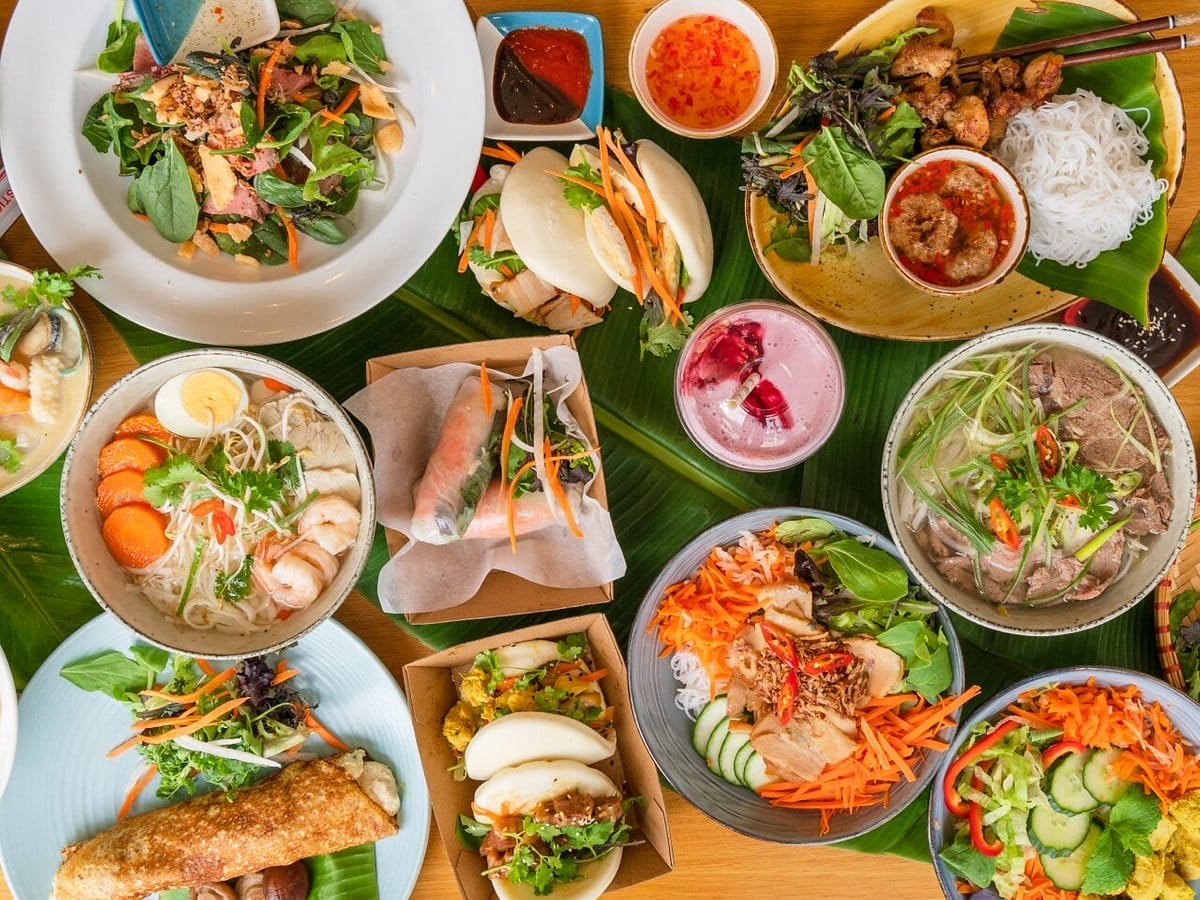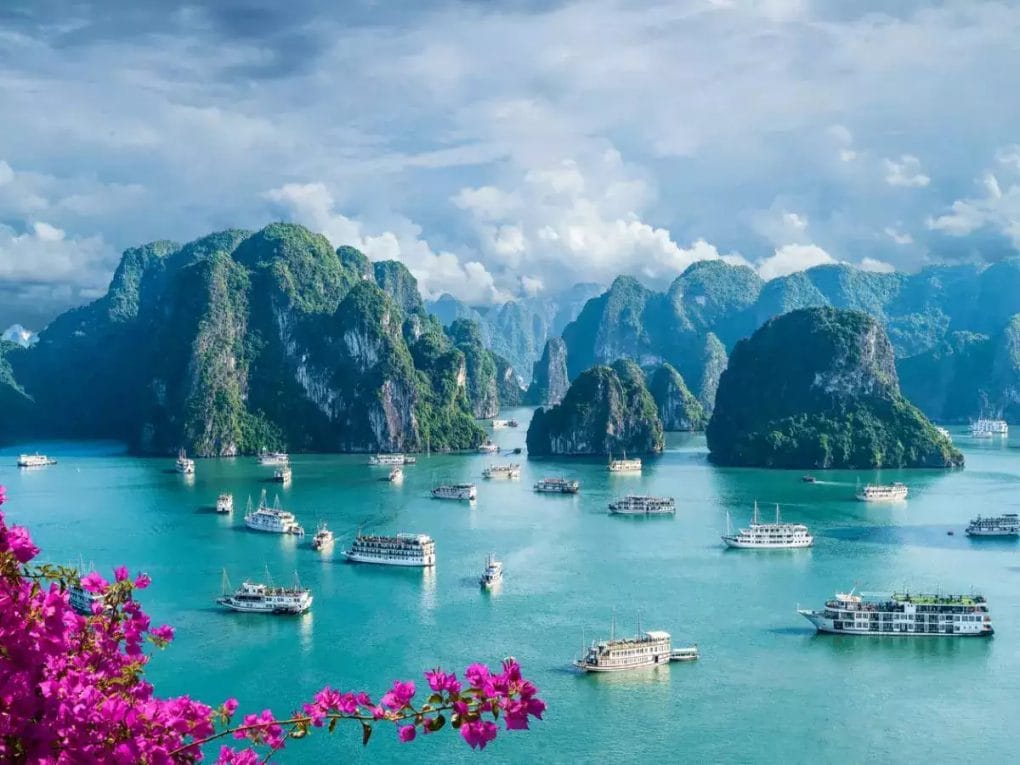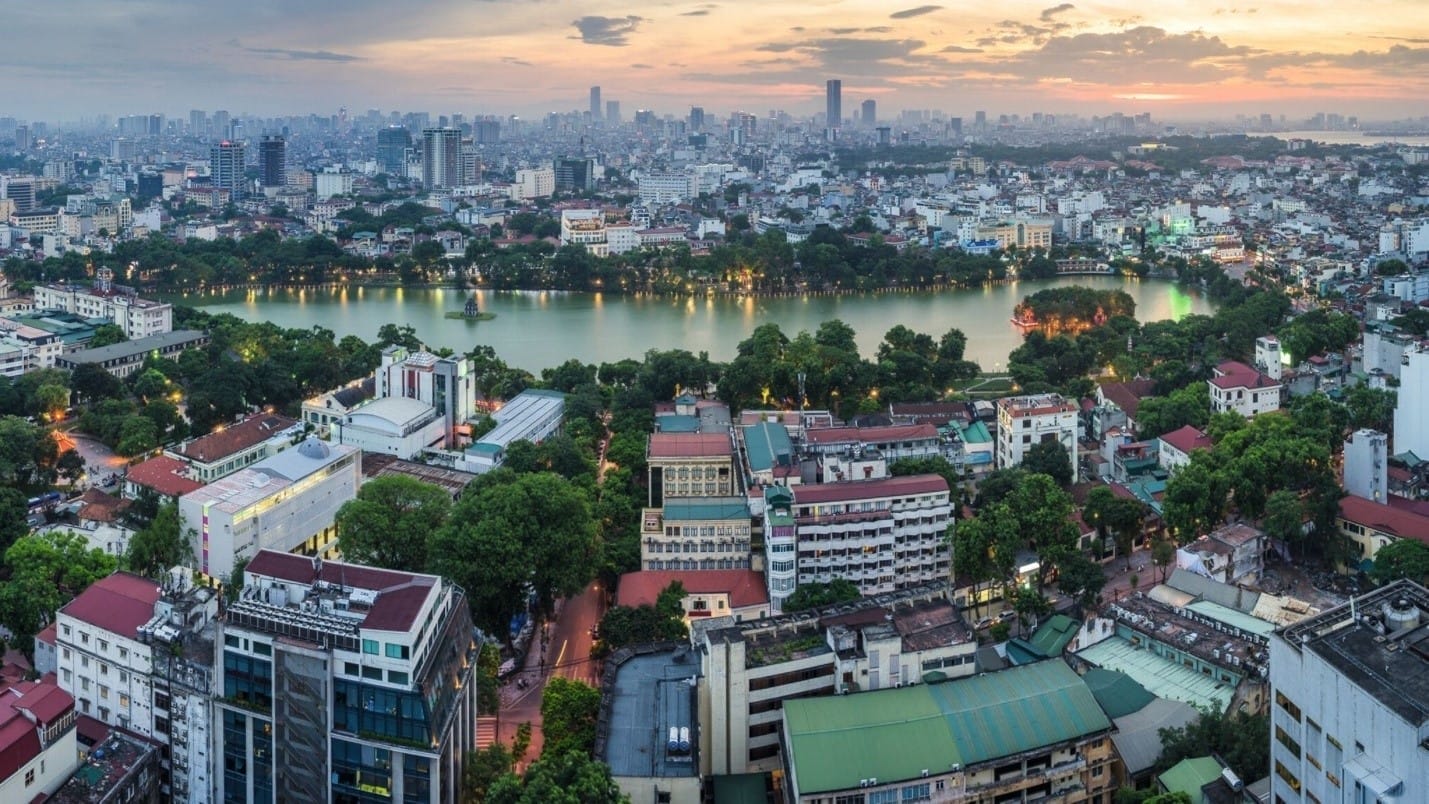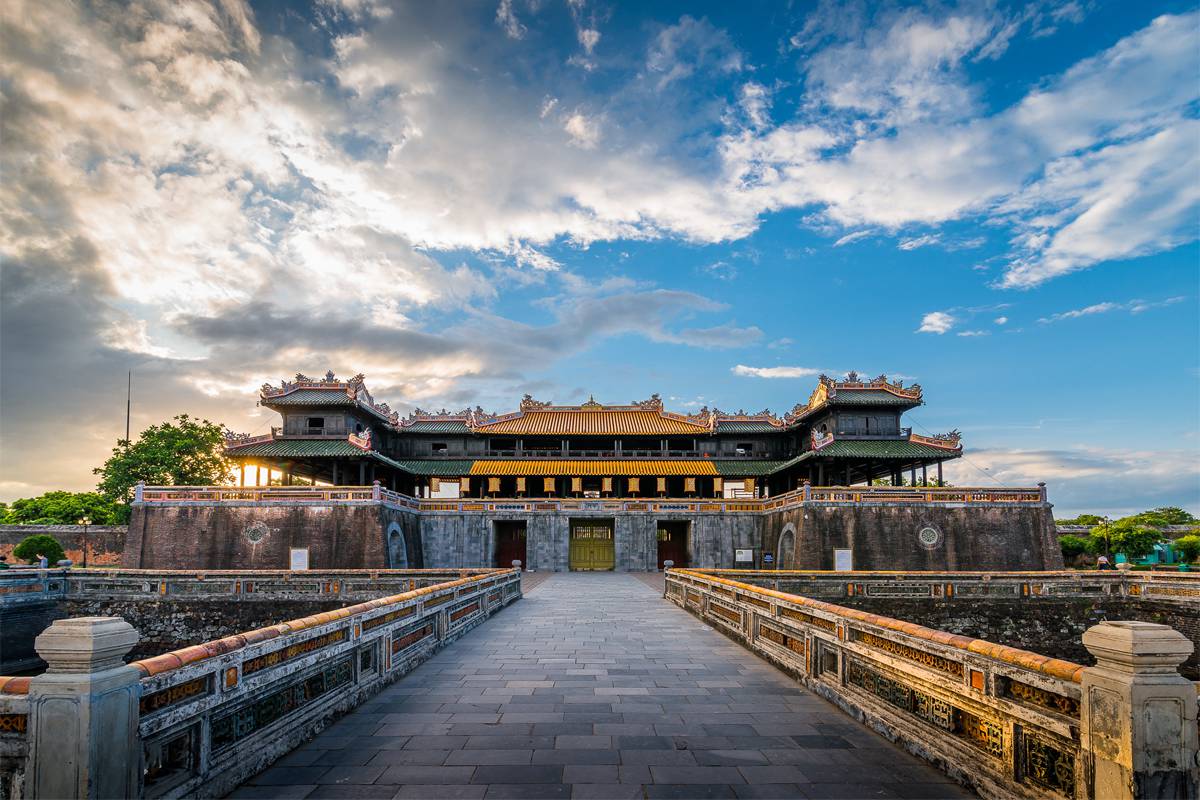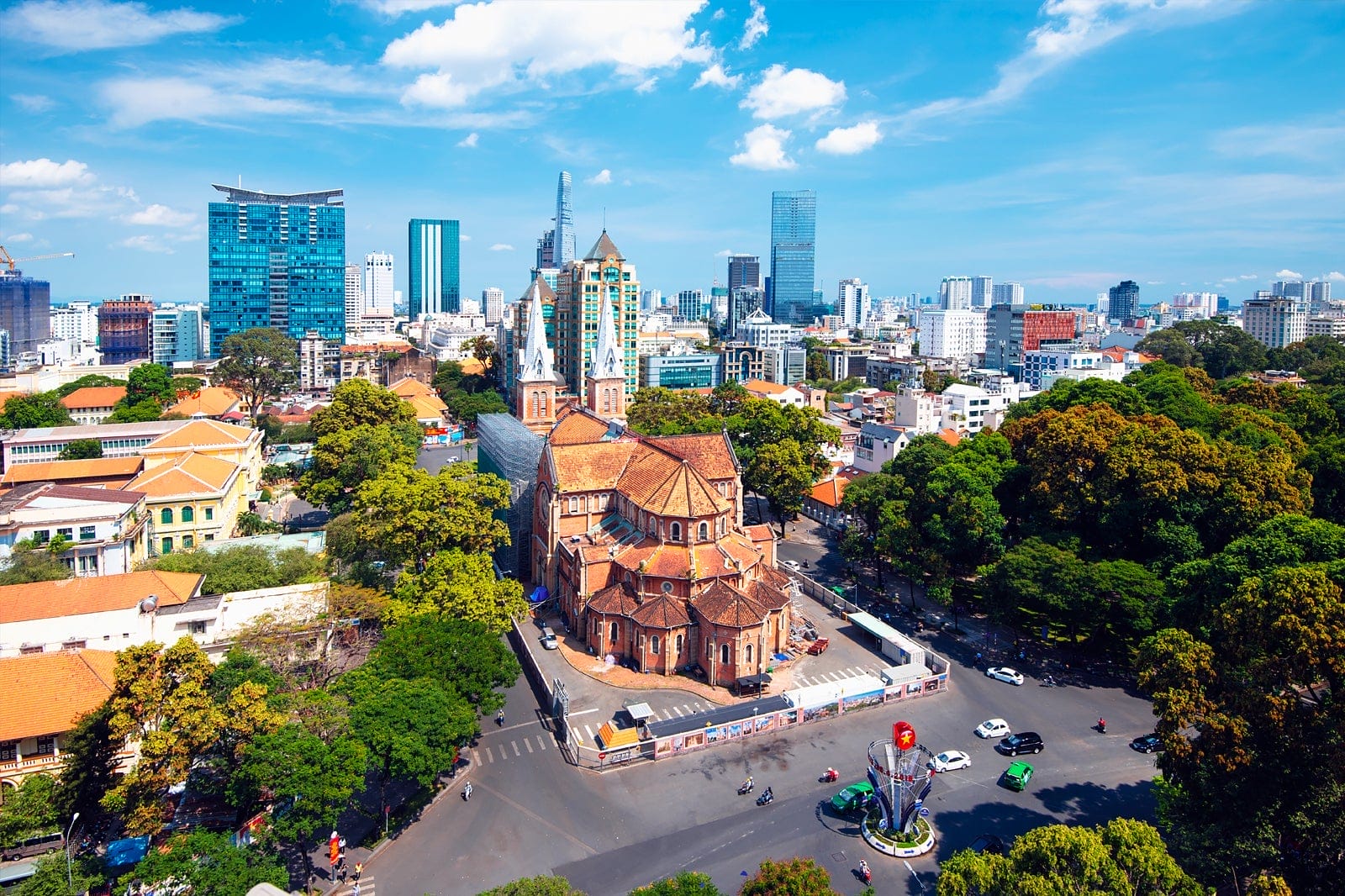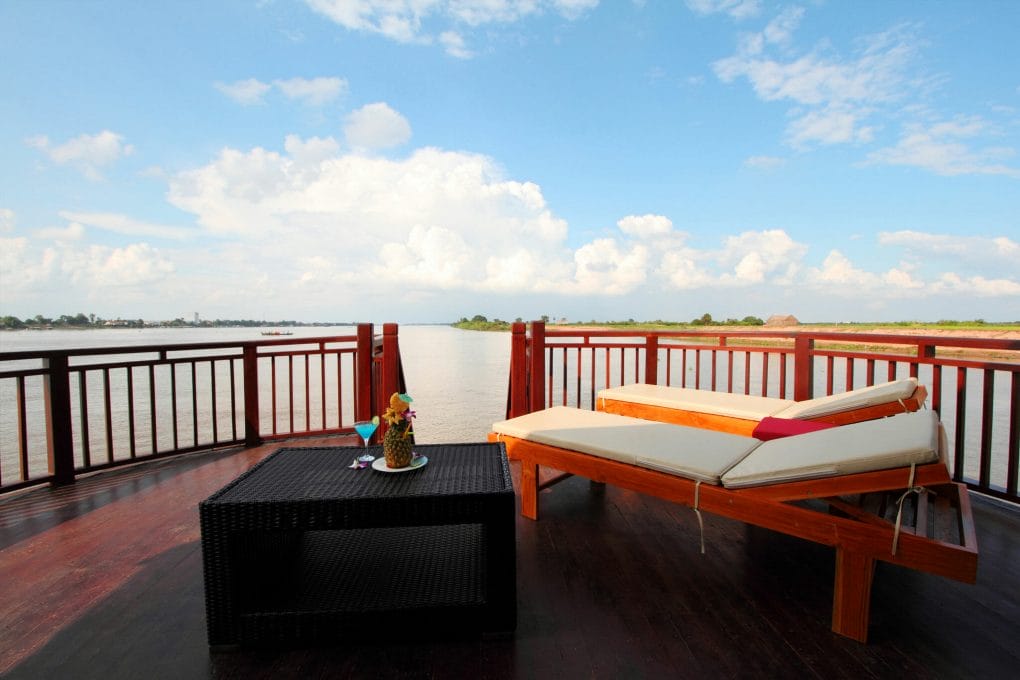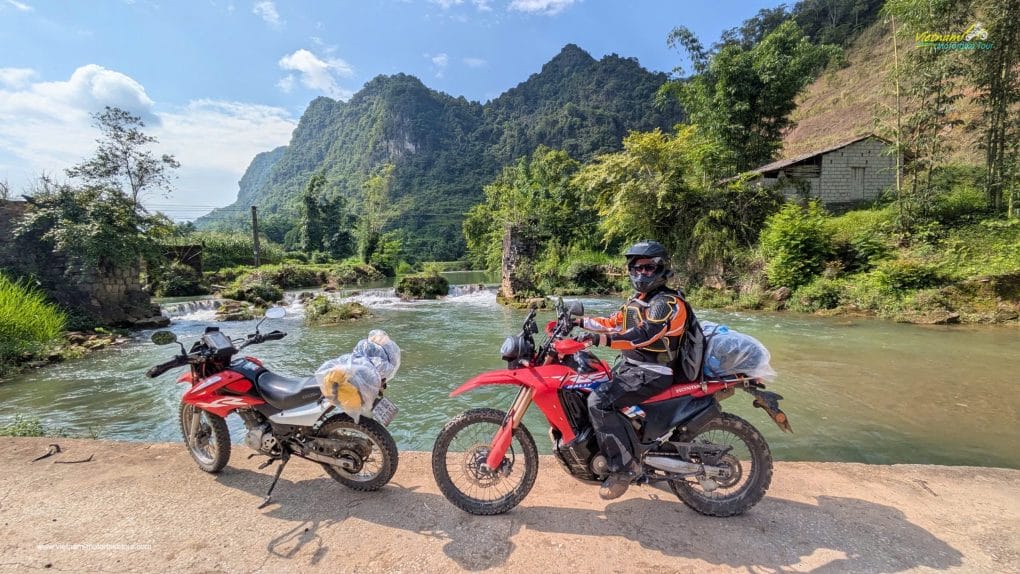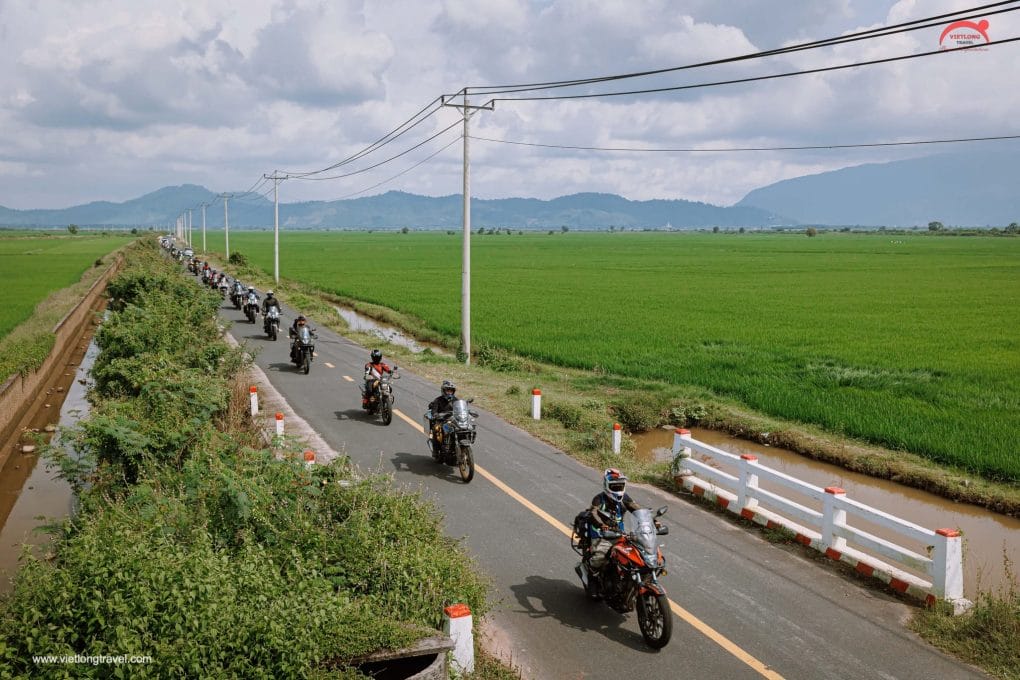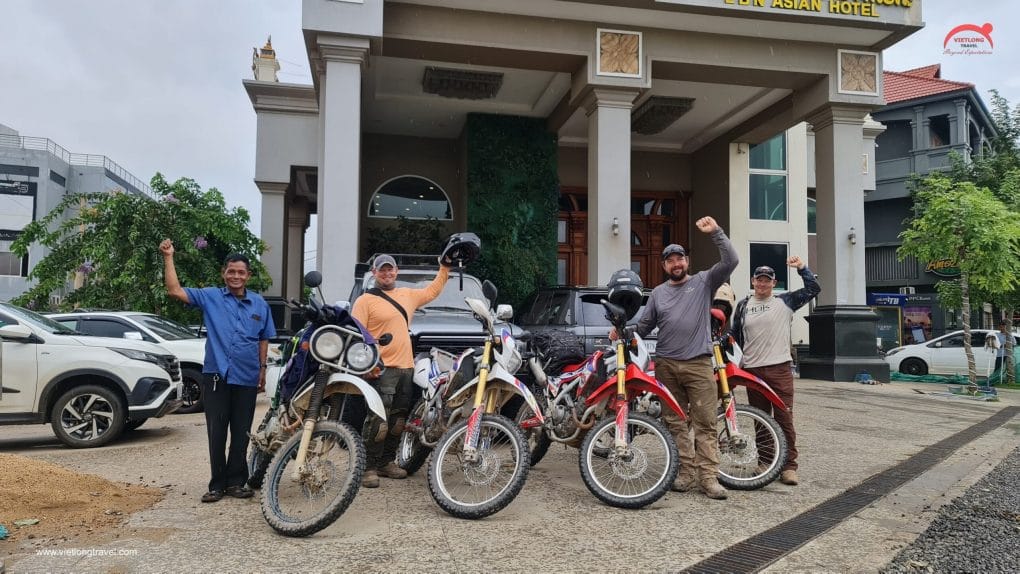Vietnam overview:
If you’re thinking Vietnam as your next vacation spot and it’s your first time considering this gem of a country, make sure to bookmark this detailed travel guide. Despite its relatively modest size and lesser-known status, Vietnam is a treasure trove of diverse experiences. Whether you’re drawn to the majestic mountains and rich ethnic communities up north, UNESCO-acclaimed historic towns and pristine beaches in the central region, or the lively waterways of the Mekong Delta and expansive rice paddies down south—Vietnam has it all.
Boasting over 3,000 kilometers of coastline, the country has evolved into a destination celebrated for its stunning beaches, towering limestone karsts, and dynamic cities. While Vietnam still has its challenges with tales of hectic roads, scams, or pushy vendors, it remains a compelling destination, offering a blend of natural wonders and rich cultural experiences. Welcome to Vietnam!
Top essential things to know before visiting Vietnam:
1. Sort out your visa:
When it comes to traveling anywhere, the topic of visas usually comes up first. It’s quite surprising that many people planning a trip to Vietnam are unsure about how to go about getting their visa. The reality is, citizens from certain countries can visit Vietnam without a visa for a set duration, while others might need to get one to enter the country.
Getting a Vietnam visa used to be a real hassle at the Vietnamese embassies—confusing and tough. But, luckily, things have changed. Now, travelers have two more straightforward options: visa on arrival (VOA) or e-visa. These are way more convenient and save a lot of time. Just a heads up, though, visa on arrival is only for flying in. You can find many online companies that can sort it out for you, usually for a small fee.
In case you would like to apply for visa by yourselves, there are three ways to have a Vietnam Visa: by applying at a Vietnamese embassy, by applying for Vietnam Visa on Arrival and applying online for an E-Visa. Each way has its own requirements and procedure.
|
Visa at Embassy |
Visa on Arrival (VOA) |
E-Visa |
|
|
Issuing authority |
Vietnam Immigration |
Vietnam Immigration |
Vietnam Immigration |
|
Beneficiaries |
Air/Land/Water travelers |
Air Travelers |
Citizens of 46 countries on the list (UK, US) Air/Land/Water travelers |
|
Purpose of Trip |
Vacation, business, family/friend visits, and others |
Vacation, business, family/friend visits, and others |
Vacation Only |
|
Visa validity |
1-month single/multiple entries, |
1-month single entry |
|
|
Visa Fee |
Most costly |
Varied |
US$25, non-refundable in case your visa application is refused |
|
Procedure |
· Fill out the form offered by a visa agency; · Make a payment of the service fee; · Receive the visa approval letter via email; · Get your visa stamped at Vietnam airport upon arrival by presenting an original passport, photos, entry and exit form, and stamping fee in cash. |
· Access evisa.xuatnhapcanh.gov.vn/ · Make a payment of the visa fee; · You will then be provided with a digital code will be provided with a digital code to check the application progress and print their e-visas once they have been issued. |
Note: The visa rules for Vietnam vary depending on your nationality, and they can change often. It’s a good idea to always double-check the visa conditions for your nationality before you head out on your trip.
2. The weather changes greatly:
Vietnam is generally hot and humid, but the weather varies a lot. Because the country is long and narrow, the natural conditions change depending on where you are. There are three main weather regions, so at the same time, it might be snowing in Sapa while Phu Quoc is scorching.
Here’s a breakdown of the weather:
Northern Vietnam: Summers are hot and wet, while winters are cool and dry. From September to November, it can get chilly, especially near the border with China.
Central Vietnam: Expect dry and hot weather from January to August, with temperatures around the mid-thirties.
Southern Vietnam: It’s all about the tropical vibes with just two seasons—dry and wet.
Because the weather varies so much, the best time to travel and make the most of your trip is from December to April.
3. People are friendly:

The charm of Vietnamese culture is in large part due to the exceptionally warm and welcoming nature of the people. Vietnamese folks are known for their friendliness, loveliness, kindness, and generosity. Travelers often share that while they encounter friendly people in various parts of Asia, the kindness they experience in Vietnam takes it to a whole new level. Even with not much to spare, the locals are more than willing to share what they have with you.
4. Things are reasonably priced:

You won’t be breaking the bank in Vietnam—it’s one of the most budget-friendly countries in Asia. From transportation and hotels to drinks, meals, and souvenirs, everything is remarkably affordable, especially when compared to other Asian destinations like Thailand. Your cash stretches a long way here, making Vietnam an accessible and wallet-friendly choice for travelers.
5. Wear suitable clothing:
It is not required to dress like an Afghan woman in Vietnam, as it is not a conservative country. When visiting popular tourist destinations or strolling around the city, it is completely acceptable to dress casually in a shirt, shorts, and flip-flops. However, it is recommended to wear something cover-up when visiting religious sites, such as temples.
6. A food paradise:
Vietnam is stepping into the global food scene, making waves with its unique and delightful cuisine. Vietnamese food is a symphony of sweet, sour, salty, and savory flavors that’s hard to put into words.
Consider Vietnam a food paradise, and words alone can’t capture the richness it brings to the table. The cuisine is a window into the heart of Vietnamese culture, evolving as you move from the northern to the southern regions. Up north, it’s less spicy; central Vietnam turns up the heat, and down south, you’ll find a sweeter touch.
Don’t leave Vietnam without trying some must-have dishes like fresh and fried spring rolls (Nem), rice noodles (Phở), steamed rice pancakes (Bánh Cuốn), and the flavorful Cha Ca.
7. Using public transportation is rather simple:
Regarding transportation, Vietnam is among the easiest countries in Asia because of its reasonably priced, well-established, and dependable transit system. Travelers can use public transportation to travel to any part of Vietnam.
Travelers have a wide range of alternatives when it comes to exploring Vietnam. Visitors to Vietnam have a variety of options for getting about the country, including long-distance trains and buses. If you’re a reasonably daring tourist, you may rent a motorbike (also known as a scooter) to navigate around large cities like Ho Chi Minh City or Hanoi. Two other fascinating but less daring choices are motorcycle taxis and cyclos, or three-wheeled bicycle taxis.
To ensure you don’t miss any unique travel experiences in Vietnam, plan to spend some time floating down the river by boat, regardless of what you do or where you go.
8. Be aware of road safety:

The traffic in Hanoi and Ho Chi Minh City might seem scary, especially during rush hour. Walking through busy streets can feel tough for newcomers. But don’t worry, it’s not as tough as it looks. Imagine you’re part of a school of fish—just move steadily and slowly, and the traffic will smoothly go around you. It’s like a simple dance, and you’ll get the hang of it in no time!
WHERE SHOULD YOU VISIT IN VIETNAM FOR THE FIRST TIME?
Sapa:
Sapa is a super popular place in the mountains of Vietnam. It’s like a getaway from busy cities, with awesome views of forests, rice fields, and hidden wonders for adventurous folks.
But it’s not just about the pretty views—Sapa is also famous for its mix of cultures. Tiny villages on the hills are home to different groups of people who’ve lived here for a really long time. And if you love nature, Sapa is like a paradise with lots of animals, birds, and plants to enjoy.
Ha Long Bay:
Halong Bay is like a big deal—it’s a UNESCO World Heritage Site and probably the coolest place in Vietnam. Picture this: around 2,000 islands made of limestone shoot up from the water like super tall buildings. And there are 58 caves, each with its own stories and beauty.
The best way to check out Halong Bay is by hopping on a cruise or boat. From there, you get to see all these amazing islands and even spot houses floating on the water where local fishermen live. It’s an awesome way to explore!
Hanoi:
Hanoi, one of the oldest cities globally and Vietnam’s capital, is a bit crazy with its bustling vibe. But guess what? It’s super fun to explore on foot. Hanoi is like a treasure chest of history, from really old stuff to French-style buildings and Soviet-inspired places. You’ll find cool museums, peaceful pagodas, tree-lined streets, and mouth-watering food.
Now, speaking of food—Hanoians know their way around making and enjoying it. So, for visitors, tasting the unique local dishes is like the main event. It’s the secret sauce that makes experiencing Hanoi extra special!
Hue:
Hue is like the heart of Vietnam, right in the middle and super photogenic. If you’re into history or digging into cool cultures, this used-to-be Royal Capital is a must-visit. It even got a gold star from UNESCO as a World Heritage Site. Lately, the city’s been all about a makeover, fixing up the imperial citadel, and becoming a hotspot for tourists, especially at night.
You’ve got old treasures hiding in the streets and rural spots, a bunch of ancient stuff like monuments, tombs, and pagodas, plus some seriously amazing local cuisine. And let’s talk about the food—it’s like an art form in Hue. Don’t leave without trying “Bun bo Hue,” “Com Hen,” “Banh bot loc,” and “Che.” They’re like a flavor explosion you won’t want to miss!
Hoi An:
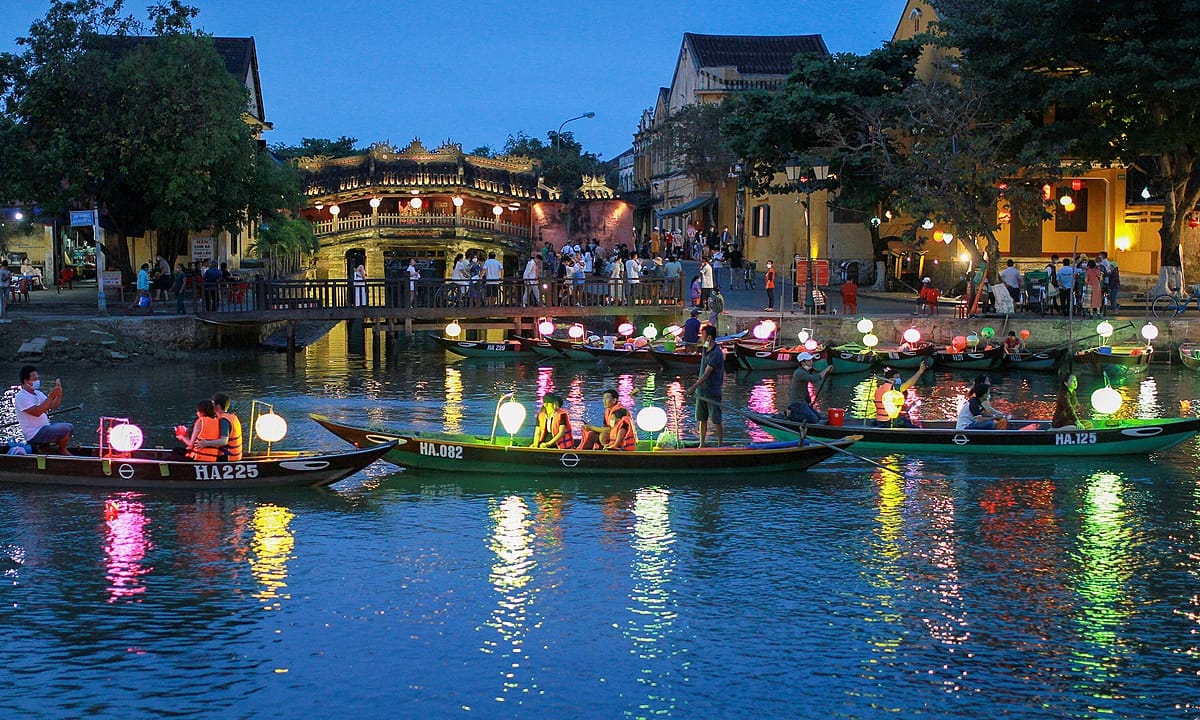
Hoi An is like a big deal—it’s a UNESCO World Heritage Old Town with a crazy history as a Southeast Asian trading port from the 15th-19th century. Picture this: cute old houses, cozy cafes on the streets, pagodas, and even beaches.
But here’s the cool part—Hoi An is a shopping paradise. You can get anything from fancy suits to cute sundresses, gowns, and even leather boots, all handmade. And that’s not all—there are cool lounge bars, travel spots, boutique hotels, and a bunch of places to get tailor-made stuff.
When you’re here, don’t miss the chance to stroll through the old streets, ride a bike in the countryside, try tasty local dishes, join a cooking class, and chill at An Bang beach. It’s the Hoi An experience you can’t skip!
Ho Chi Minh city:
Ho Chi Minh City, also known as Saigon, is like the heartbeat of Vietnam—it’s where all the action happens. From bustling markets to tasty food stalls, this city is alive with energy that sweeps up both locals and visitors. Being the biggest city in Vietnam, Saigon is not just a history hub but also a cool mix of French-style buildings, Buddhist temples, and modern spots.
There’s a lot to see, from fancy new hotels and restaurants to street vendors selling delicious treats. Saigon is all about the fun of soaking up its lively atmosphere. For first-time visitors, exploring Ho Chi Minh City is the perfect way to dive into Vietnam’s diversity and big-hearted spirit.
Mui Ne:

Mui Ne, just a short hop from the hustle of Ho Chi Minh City, is like a hidden gem loved by both locals and travelers from around the world. This town is a hotspot with tons of cool resorts and hotels offering amazing views of its coastline, sandy dunes, and beautiful beaches. Plus, the weather is just perfect.
It’s like the ultimate relaxation spot where you can kick back for a few days. The best part? You can find awesome places to stay without burning a hole in your pocket. And if you’re up for some fun, Mui Ne is the go-to place for water sports. Don’t miss the stunning white and red sand dunes about 25 km from the center—they’re a must-see. Mui Ne Sea is like the top spot in Southeast Asia for kite surfing and other cool water activities like sailing and windsurfing.
How to get around Vietnam?
Getting around Vietnam is a breeze for first-timers with plenty of transport options to pick from—like buses, trains, coaches, planes, ships, and even boats. Even though things might be a bit basic, Vietnam’s transportation is getting better all the time. And bonus—it’s one of the cheapest in Southeast Asia. Here are three common ways for first-time travelers to explore Vietnam:
Planes: Believe it or not, Vietnam has more than 20 airports, connecting the country globally. Almost every city has its own airport, making travel super convenient. There are tons of direct flights, like from London to Phu Quoc Island, making getting around a breeze. Plus, flights within the country are pocket-friendly, and no journey takes more than a couple of hours.
Buses: Local buses in Vietnam can be a hit or miss, depending on what you’re expecting. It’s actually the go-to choice for many first-timers. If you opt for buses, go for the “open-tour-buses” run by travel agents, not the National Bus Services. The open-tour ones usually make fewer stops at small towns, giving you a smoother ride.
Trains: Taking a train along Vietnam’s coast is a fantastic choice for backpackers seeking a unique exploration. The trains are charmingly old-school, comfy, and provide a wonderful way to kick back, enjoy the ride, and take in the breathtaking landscapes. It’s a countryside view instead of the sky from a plane or passing petrol stations and random shops while driving. With various classes available, it’s a good idea for tourists to go for the highest level they can afford.
Other transport options to navigate Vietnam include taxis, cars, cyclos, motorcycles, motorbikes or scooters, and boats.
WHAT TO DO IN VIETNAM FOR THE FIRST TIME?
For a memorable trip to Vietnam, explore the diverse regions with these must-do activities:
North Vietnam:
- Hanoi Exploration: Start your journey in the enchanting capital, Hanoi, with a city tour, a taste of authentic Pho, and visits to iconic landmarks like the Ho Chi Minh Mausoleum and Tran Quoc Pagoda.
- Sapa Trekking: Head to the Northwest to Sapa for breathtaking trekking experiences through ethnic villages like Cat Cat and Muong Hoa Valley.
Central Vietnam:
- Hoi An Old Quarter: Lose yourself in the historic charm of Hoi An’s lantern-lit streets, explore the Japanese Covered Bridge, and take a boat ride on the Thu Bon River.
- Nha Trang Beach Break: Enjoy the sun and sea on the golden sandy shores of Nha Trang, with options for island tours and delectable seafood.
South Vietnam:
- Ho Chi Minh City History: Immerse yourself in the history of Ho Chi Minh City with visits to the War Remnant Museum and Cu Chi Tunnels.
- Mekong Delta Exploration: Discover the richness of the Mekong Delta through floating markets, ecological sites, and delicious local cuisine.
- Southern Islands’ Sunbath: Relax on the beautiful beaches of southern islands like Phu Quoc, known for its modern attractions, natural beauty, and delectable seafood.
Whether you’re trekking through Sapa’s hills, cruising on Halong Bay, strolling through Hoi An’s ancient streets, or sunbathing on Phu Quoc’s pristine beaches, Vietnam offers a myriad of experiences for every traveler.
HOW LONG SHOULD YOU STAY IN VIETNAM FOR THE FIRST TIME?
How long your first trip to Vietnam lasts really depends on how many days you want to explore. VietLong Travel has some common options for you to consider:
Magnificent Vietnam Tour From Saigon To Hanoi – 11 Days:
Link: https://vietlongtravel.com/promotion-tours/magnificent-vietnam-tour-from-saigon-to-hanoi.html
This is a captivating journey that takes you from the vibrant southern city of Saigon to the historic capital of Hanoi in the north. This tour offers a glimpse of Vietnam’s diverse landscapes, rich culture, and delicious cuisine. From exploring bustling markets and ancient temples to cruising on scenic waters, it’s a well-rounded adventure that showcases the beauty and charm of this magnificent country.
Authentic Northern Vietnam Tour To Mai Chau, Mu Cang Chai, Sapa – 6 Days:
Explore the heart of Northern Vietnam with the 6-day Authentic Northern Vietnam Tour by VietLong Travel. From the charming landscapes of Mai Chau to the captivating terraced fields of Mu Cang Chai and iconic Sapa, this tour offers an authentic cultural experience amidst stunning natural beauty.
Awesome Northern Vietnam Tour To Hanoi – Halong – Ninh Binh – 5 Days:
This is a captivating journey through the beauty of Northern Vietnam. With a perfect blend of scenic landscapes, cultural experiences, and local charm, this tour covers iconic destinations like Hanoi, Sapa, and Ha Long Bay. From vibrant city life to serene natural wonders, it’s an adventure that showcases the best of the region in a compact and exciting itinerary.
Budget Vietnam Tour For Landscapes – 13 Days
This tour offers an affordable yet comprehensive journey through Vietnam’s diverse landscapes. From the bustling city life of Hanoi to the serene beauty of Ha Long Bay, the historic charm of Hoi An, and the vibrant landscapes of the Mekong Delta, this tour covers the highlights while keeping budget-conscious travelers in mind. It’s a well-rounded adventure that captures the essence of Vietnam without breaking the bank.
For first-timers in Vietnam, this guide is your key to unlocking the country’s diverse treasures. From sorting out visas to embracing the friendly locals and navigating the dynamic weather, it covers all the essentials. Vietnam’s affordability, delectable cuisine, and well-connected transportation make it a perfect destination. The guide highlights key destinations like Hanoi, Sapa, Halong Bay, and more, offering suggested itineraries for different preferences. Whether you prefer bustling cities, historical sites, or natural wonders, Vietnam has it all. So, pack your bags and get ready for an unforgettable adventure in this captivating country!



